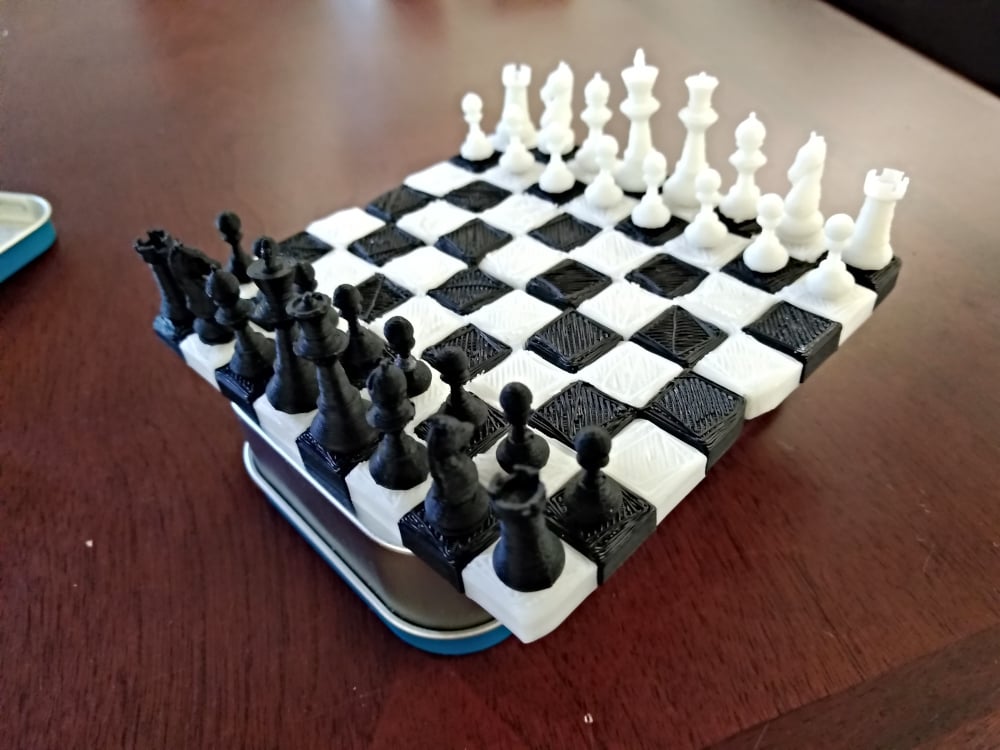
Altoids Chess
thingiverse
I was inspired by Mini Chess for Altoid Box (https://www.thingiverse.com/thing:4004332), but found the set/board quite difficult to use practically. Maybe my magnets were too powerful, because pieces stuck together, and maybe my fingers are too big, because i had a hard to maneuvering pieces. but i loved the idea! So I thought: what if the board folded, and we could have a board that's twice as big? So that's what I made. I used the same magnets that u/humphrey_b52 used for that board (4mm diameter, 2mm thick), and made the board "break" in half. Each square has a magnet embedded, so each piece sticks to each square. The board and pieces are scaled up, not quite by a factor of 2, because the tin is 90mm by 55mm (8 squares across 90mm, vs the whole board fitting into 55mm). At first I wanted the board to have a hinge, but with the embedded magnets, the two board halves would repel each other when folded, so instead they just separate and stack (and stick to the tin when in use, so no real need for them to click together or anything either). white squares are printed all as one, and black squares are "press fit" into place. friction has done a fine job of holding the pieces in, so far, but a dab of acetone (if printing with ABS) will lock them into place. You'll notice the black corners are connected to their diagonal neighbor, so I found it easiest to press these into place first. I also doubled-up the inner 16 magnets, to make them "stick" better to the bottom of the tin. For the pieces, I used u/tetralite's Print Friendly Chess Set (https://www.thingiverse.com/thing:378322). I kept the scaling of the pieces with respect to each other, and set the max diameter (king and queen) to 10mm (each square is 90mm/8). This means the pawns may be a bit delicate and difficult to print (smaller bottom diameter, very small bottom surface area, and thin "stalks"), but i think it looks a bit better than making chunky pawns by scaling them up to the same diameter. take care with your magnet orientation, as all magnets in the squares and pieces must have matching polarity. if not, you may end up with certain squares which pieces can't move to, because the magnets oppose! For generation, I used SolidPython, which generates the openSCAD files, and then i used openSCAD to generate the STLs. the same python code generates the black and white board pieces, and does some math for the piece dimensions. I also have two separate openSCAD codes for the pieces: one is used solely for visualization (I was particularly concerned about making sure the pieces fit in the tin, although this turned out to be a non-issue, due to the actual shape of the pieces), and a second one for generating the magnet holes and STLs.
With this file you will be able to print Altoids Chess with your 3D printer. Click on the button and save the file on your computer to work, edit or customize your design. You can also find more 3D designs for printers on Altoids Chess.
